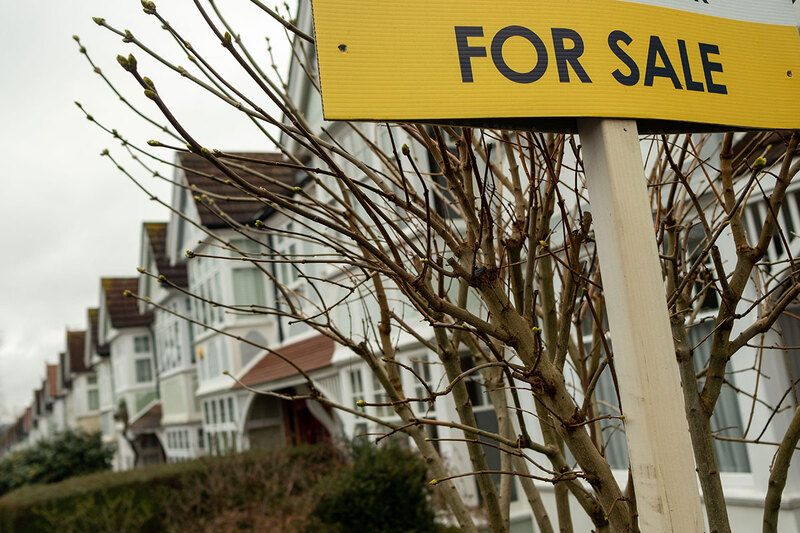RSH warns over landlords relying on selling homes to help finances
The English regulator has warned that it will continue to monitor the financial viability of landlords that rely on selling stock to help their cash flow.
The Regulator of Social Housing’s (RSH) Global Accounts for 2023-24 showed that providers are planning more bulk stock disposals and scaling back their development ambitions, as the focus remains on existing stock.
Stock disposals
The regulator’s data showed that 2023-24 business plans have seen a rise in the number of providers including plans for bulk stock disposals.
“There are several potential reasons for this, including stock rationalisation in terms of both geographic areas of operation, and the sale of properties which cannot economically be brought up to standard,” the regulator said in its Global Accounts.
“Where providers are reliant on such disposals to maintain their financial viability, it is essential they understand the associated risks, both financial and reputational.
“The regulator will continue to monitor the financial viability of providers where there is a reliance on fixed asset sales to support cash flows and reflect its findings in regulatory judgements where appropriate.”
The surplus generated from fixed asset shared ownership staircasing sales fell from £1.6bn in 2022-23 to £1.3bn in 2023-24 and the surplus from Right to Buy and Right to Acquire sales dropped from £700m to £600m. However, the surplus achieved from sales of other social housing, including stock disposals, rose from £2.9bn to £3.9bn.
Scaling back development
The data also confirmed the trend that many landlords are scaling back their development ambitions to spend more on improving their existing homes.
The total number of homes forecast to be completed in the first five years has fallen by 42,000 units annually (12 per cent) to 292,000.
This follows a record spend of £8.8bn on repairs and maintenance during 2023-24.
“With continuing pressure to improve the quality of existing stock, a number of providers have indicated that they will be reducing their development targets in order to prioritise investment in existing homes,” the RSH said.
The regulator added: “In response to reduced financial capacity, a challenging operating environment and the level of economic uncertainty we expect providers to continue to adapt plans appropriately.
“It is vital they continue to manage their resources and risks effectively to ensure that their financial viability is maintained, and that they remain capable of delivering effective services and their responsibilities to tenants.”
The RSH said the largest reductions are in properties developed for sale, both market sale and shared ownership.
“The reduction in development for sale in particular may indicate that providers are choosing to de-risk their business plans in order to focus on investment in their existing stock,” the regulator said.
“In some parts of the country market conditions and concerns about viability of the cross-subsidy model may also be a factor. There has been a smaller reduction in sub-market rental development overall with a decrease in affordable rent properties and an increase in social rent.”
Rising cost of development
Despite the cutback on the number of homes, spending on new supply totalled £15bn in 2023-24, which was a 10 per cent rise year-on-year.
The £15bn figure was the highest amount recorded on development since comparable data was first collected in 2019.
The total includes the development and acquisition of social housing properties, properties developed for sale, and investment properties.
The increase was partially attributable to higher construction costs, with the number of new social homes delivered increasing by just three per cent to 54,000, the RSH said. The value of properties under construction also rose by seven per cent to £15.6bn.
Development activity was concentrated, with 12 providers reporting more than 1,000 units developed or acquired in the year. In combination, this group was responsible for more than a third of the total new social units reported by the sector.
One for-profit provider developed or acquired 3,700 new social units and in total 10 per cent of all new social units were attributable to for-profit providers.
The RSH added that the impacts of inflation, contractor insolvency and higher interest rates have made the development of new housing a “much more challenging activity” than in the recent past.
The regulator said that the sector continues to demonstrate “robust liquidity” in aggregate and was able to raise the funds required to support investment in new and existing supply.
Including refinancing, the sector agreed new facilities of £12.5bn in 2023-24 and reported undrawn facilities of £29.9bn in March 2024.
The Global Accounts also showed the sector’s weakening financial position, with its EBITDA MRI interest cover falling below 100 per cent in 2023-24 for the first time since the 2007-08 financial crisis.
Sign up for Social Housing’s weekly news bulletin
Social Housing’s weekly news bulletin delivers the latest news and insight across finance and funding, regulation and governance, policy and strategy, straight to your inbox. Meanwhile, news alerts bring you the biggest stories as they land.
Already have an account? Click here to manage your newsletters.
RELATED









